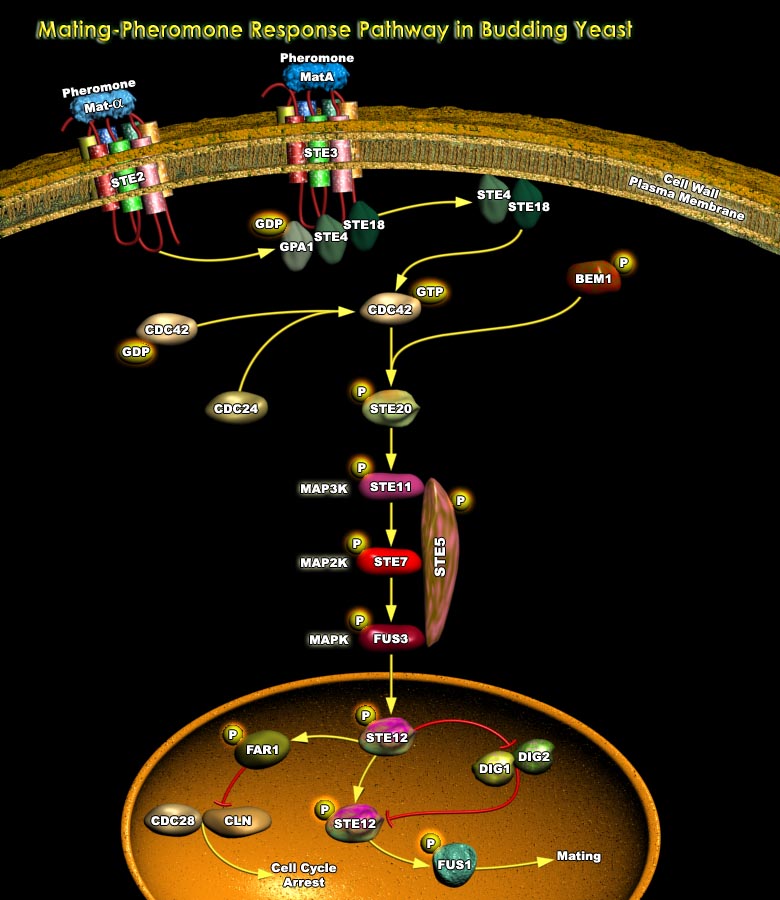
The MAPK (Mitogen-Activated Protein Kinase) cascades play a pivotal role in many aspects of cellular functions, and are evolutionarily conserved from yeast to mammals. In Saccharomyces. cerevisiae, there are five MAP kinase signal transduction pathways that regulate mating, filamentous growth, high osmolarity response, maintenance of cellular integrity, and ascospore formation. The best-defined yeast MAPK pathway in S. cerevisae is involved in the mating of haploid cells. Yeast may exist either as haploid or diploid cells. The haploid cells have two sexual phenotypes characterized by the expression of a set of genes involved in mating that are not expressed in diploids. The mating response to generate diploids is stimulated by the release of small peptide mating[..]
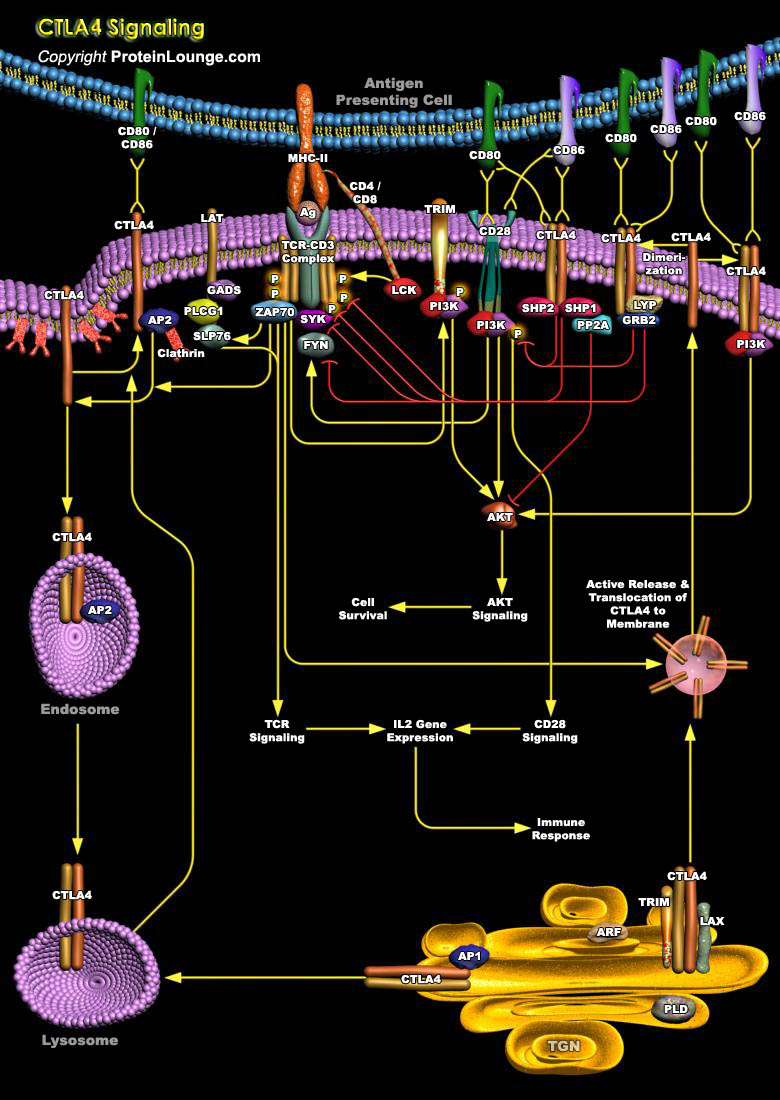
CTLA4 (CD152) is a member of a class of cell surface molecules capable of terminating early events in the receptor-mediated signaling cascade. It is a 41–43 kDa,type 1 transmembrane glycoprotein of the immunoglobin superfamily having 223 amino acids in length. The extracellular architecture of CTLA4 is characterized by a single IgV-like domain containing the B7- 1 (CD80)/B7-2 (CD86) ligand-binding site. Expression of CTLA4 is dependent both on TCR stimulation by the antigens and CD28-B7 engagement. The costimulatory CTLA4 pathway, attenuates or downregulates T cell activation and CTLA4 is designed to remove body cells displaying "foreign" epitope, such as virus-infected cells, cells containing intracellular bacteria, and cancer cells with mutant surface proteins. The[..]
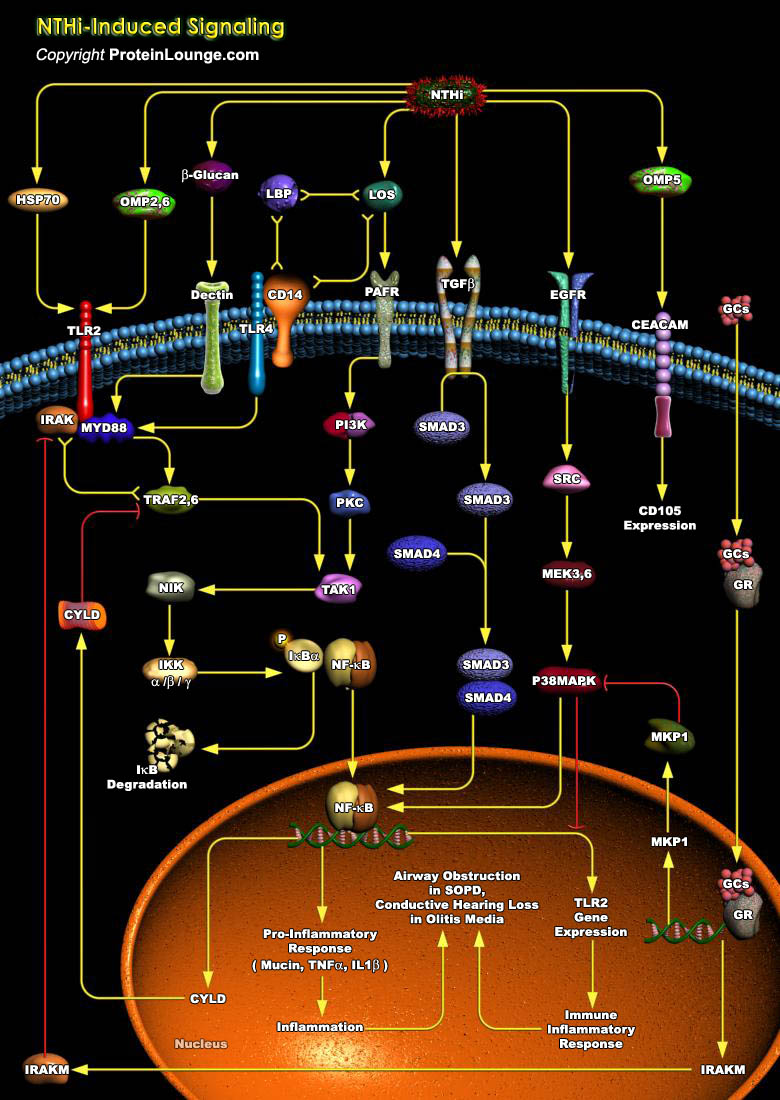
Nontypeable Haemophilus influenzae (NTHi) organisms are small Gram-negative bacteria that colonize the upper respiratory tract of humans beginning at a very early age. NTHi is also a leading cause of otitis media (OM), sinusitis, and community-acquired pneumonia, often following viral respiratory infection. A rising proportion of otitis media caused by NTHi has been attributed to widespread use of the pneumococcal conjugate vaccine, which was introduced in the year 2000 and has reduced the incidence of respiratory infections caused by Streptococcus pneumonia Among adults, particularly among patients with chronic obstructive pulmonary disease (COPD), NTHi infections are a major cause of illness, especially during the acute exacerbations that often characterize[..]

The internal osmolarity of a growing yeast cell is maintained higher than the external osmolarity. The resulting osmotic gradient across the plasma membrane brings in water for cell expansion and creates turgor. Yeast cells are quite resistant to various types of stress including hypertonic stress. This adaptability can be traced to stress-activated signaling pathways that sense the stress condition and activate expression of proteins that resist the toxic effects of the stress and promote survival and eventual cell growth under the new conditions. In Saccharomyces cerevisiae, changes in the osmolarity of the medium have been reported to affect different signaling pathways. The best-characterized signaling system by far involves the MAPK (Mitogen-Activated Protein[..]
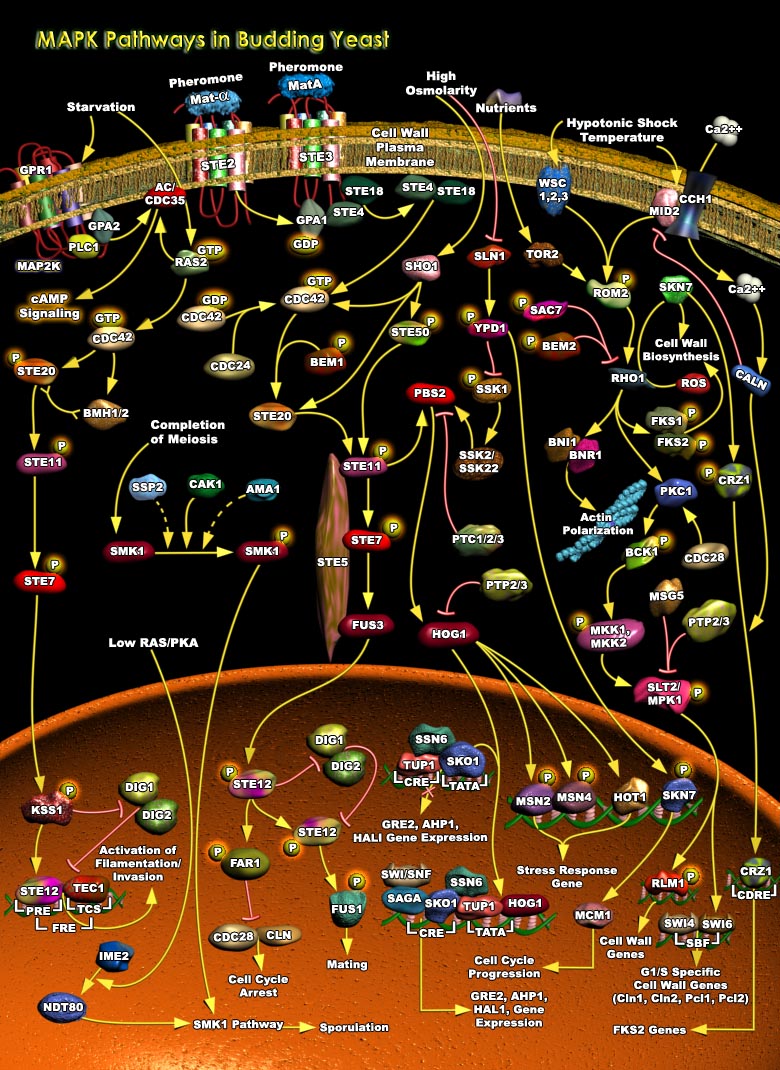
MAPK (Mitogen-activated protein kinases) are serine-threonine protein kinases that are activated by diverse stimuli ranging from cytokines, growth factors, neurotransmitters, hormones, cellular stress, and cell adherence. MAPKs are expressed in all eukaryotic cells. The basic assembly of MAPK pathways is a three-component module conserved from yeast to humans. The MAPK module includes three kinases that establish a sequential activation pathway comprising a MKKK (MAPK Kinase Kinase), MKK (MAPK Kinase), and MAPK. Yeast probably represents the experimental model where the organization and regulation of MAPK pathways are best understood. Presently, five MAPK pathways have been well characterized in the budding Yeast, Saccharomyces. cerevisiae. The four MAPKs present in[..]
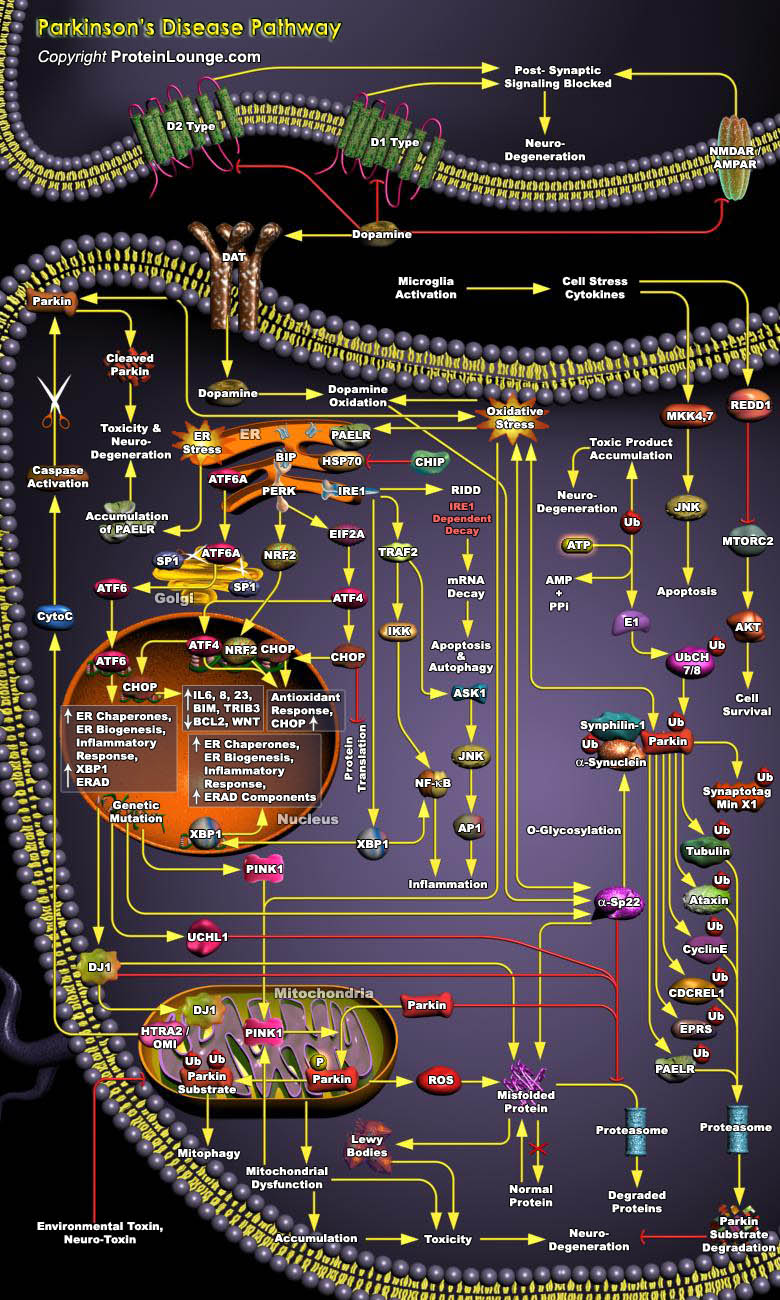
Parkinson's disease is a Neurodegenerative disorder characterized by the progressive loss of Dopaminergic neurons in the substantia nigra and the appearance of intracellular inclusions, named Lewy bodies and Lewy neurites in the remaining nigral neurons. The Substantia nigra is located in the midbrain region of the brain. It consists of two parts: the SNc (pars compacta), and the SNr (pars reticulata). The pars compacta produces dopamine and is the part that degenerates in Parkinson's disease. It is the second most common form of neurodegenerative disease after Alzheimer's, affecting about 1% of people over 65 years old and 4-5% of people over 85 years. Symptoms of Parkinson's disease include a resting tremor, rigidity, bradykinesia, gait dysfunction[..]
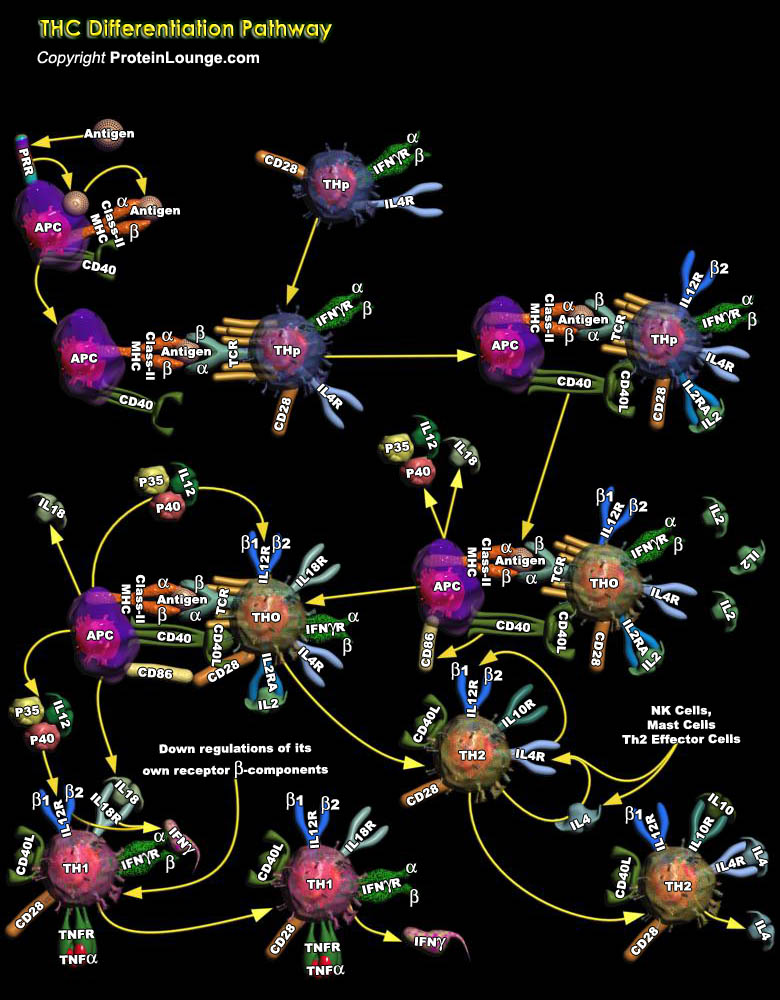
During infection, T and B-lymphocytes recognize microbes by means of antigen-specific cell-surface receptors. The humoral immune response is mediated by B cells and the antibodies they produce. T-lymphocyte response to antigenic challenges is called the cellular immune response. T-lymphocytes can be categorized and functionally divided into CD4+ (T-helper lymphocytes) cells and CD8+ (cytotoxic T-lymphocytes) by the type of antigen receptors and a small number of accessory markers on their cell surface. There are three different classes of CD4+ T-lymphocytes, or helper T cells: TH1, TH2 and TH3) (Ref.1). The abbreviations TH1 (T-helper Cell type 1) and TH2 (T-Helper Cell type 2) refer to CD4+ alpha-beta TCR T-Cell subsets that provide help to cells of both the innate[..]
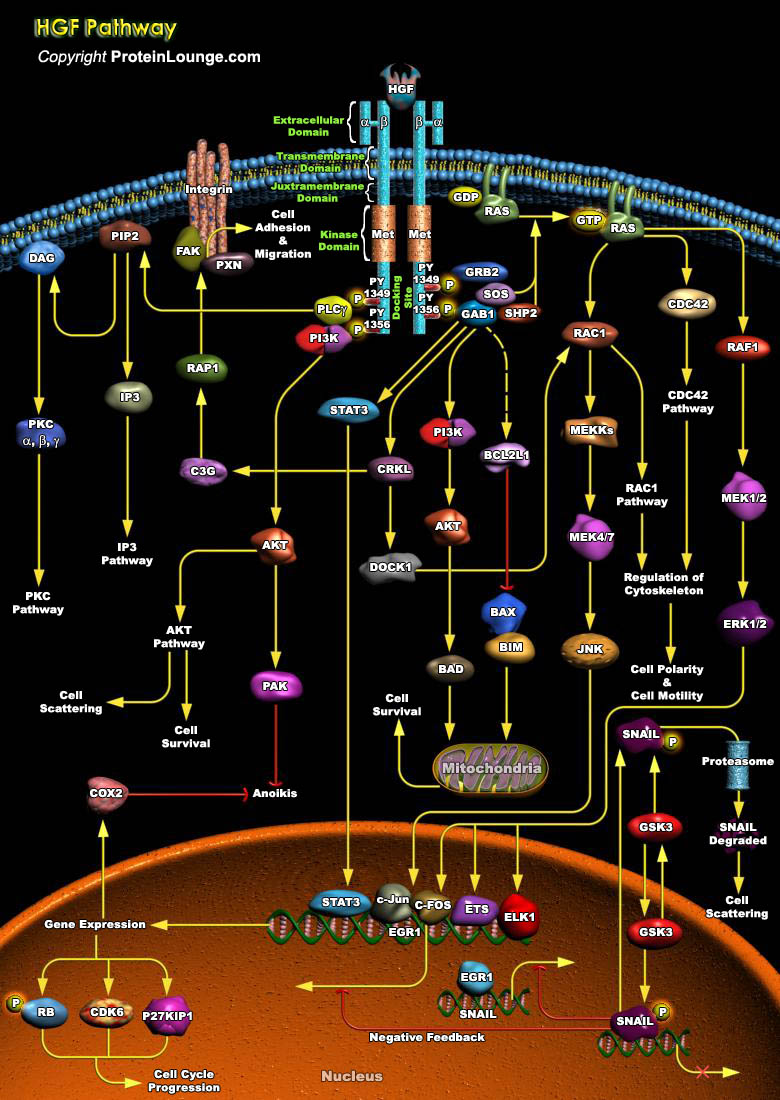
HGF (Hepatocyte Growth Factor)/SF (Scatter Factor) is a mesenchymal- or stromal-derived multipotent heparan sulfate-binding and dermatan sulfate-binding pleiotropic polypeptide that mediates epithelial-mesenchymal interactions with mitogenic, motogenic and morphogenic activities towards many normal and neoplastic epithelial cells. Initially identified as a potent hepatotrophic factor responsible for vigorous regeneration of the liver, it has now become a well characterized multipotent cytokine with biological functions that reach far beyond the original identifications, operating in virtually every tissue of the body, the cellular targets being the hepatocytes and other epithelial cells, melanocytes, endothelial and haematopoietic cells (Ref.1). During embryogenesis,[..]
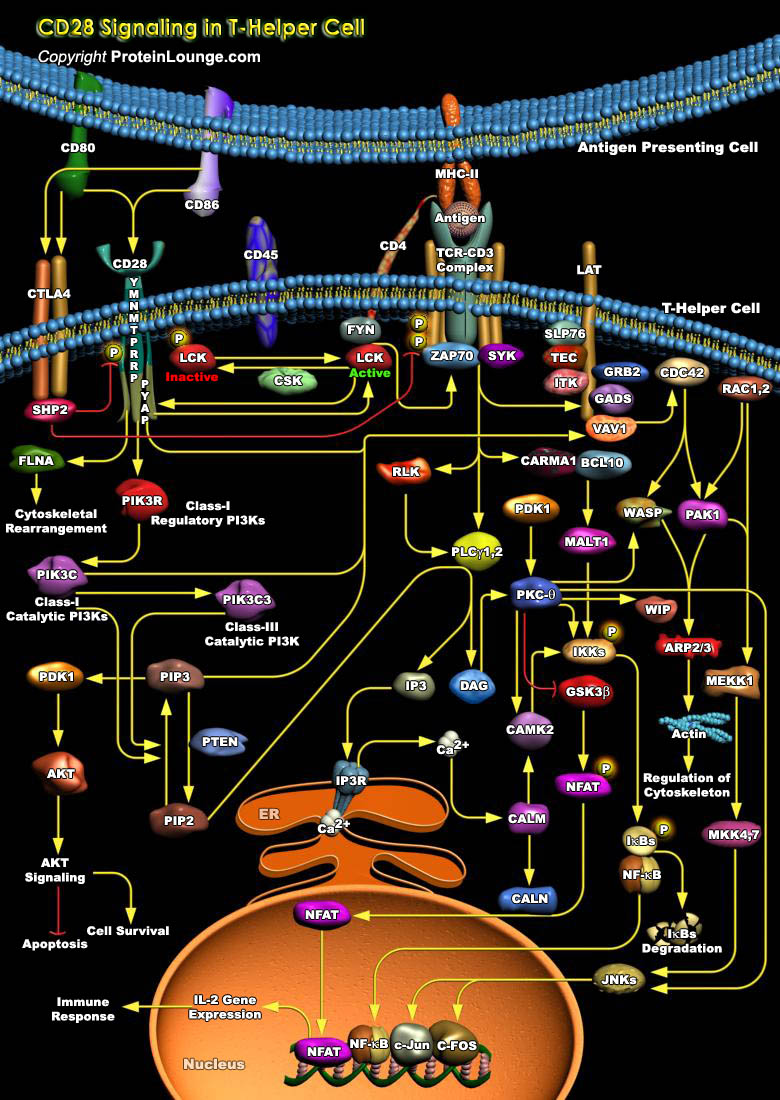
CD28 (Antigen CD28) is characterized as a co-receptor for the TCR (T-Cell Receptor)/CD3 (CD3 Antigen) complex and is responsible for providing the co-stimulatory signal required for T-cell activation. CD28 also act as a receptor independent of the TCR and can initiate signaling events without concomitant TCR ligation. Priming of naive T-cells in lymphoid organs depends on the interaction between CD28, which is constitutively expressed in T-cells, and both CD80 (CD80 Antigen) and CD86 (CD86 Antigen) and induces subsequent IL-2 (Interleukin-2) production and clonal expansion for effective immune response. CD28 is a major positive co-stimulatory molecule required for T-cell activation and functional differentiation, and that CTLA4 (Cytotoxic T-Lymphocyte Antigen-4) upon[..]
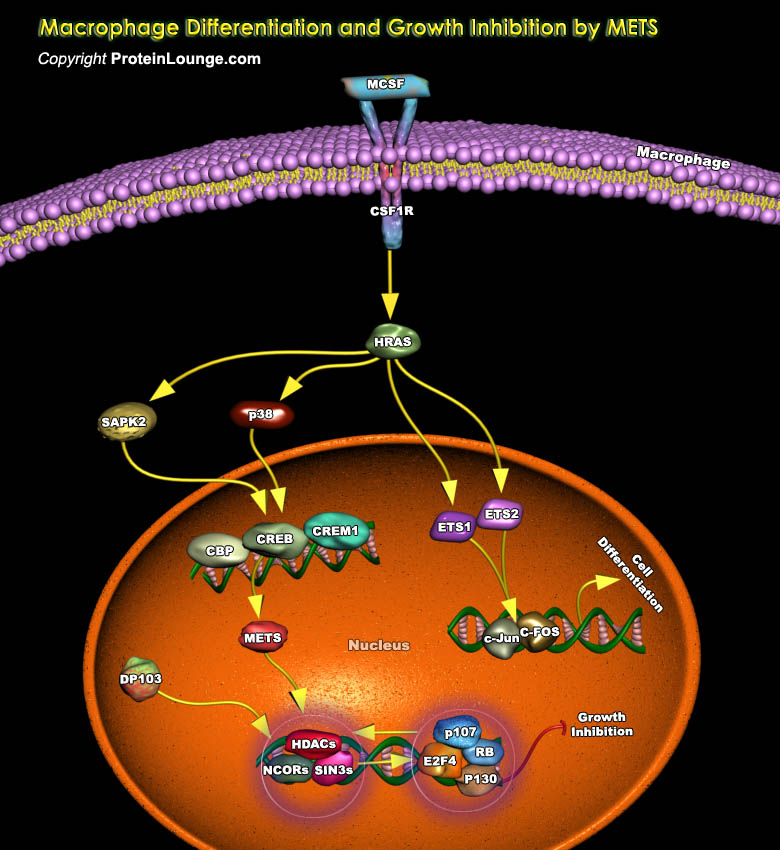
Cell differentiation begins only when the cell proliferation mechanism is seized, and the macrophage differentiation system is a good example, as the macrophages start to differentiate only when they stop proliferating. Molecular mechanisms which act coordinately in order to regulate cell proliferation and differentiation are vital in development. Induction of Ets (v-Ets Avian Erythroblastosis Virus E26 Oncogene Homolog) repressor that is METS (Mitogenic Ets Transcriptional Suppressor) leads to terminal differentiation and cell cycle arrest (Ref.1). Macrophages are models, which provide evidence that METS blocks HRas (v-Ha-Ras Harvey Rat Sarcoma Viral Oncogene Homolog)-dependent proliferation without inhibiting HRas-dependent expression of cell type-specific[..]
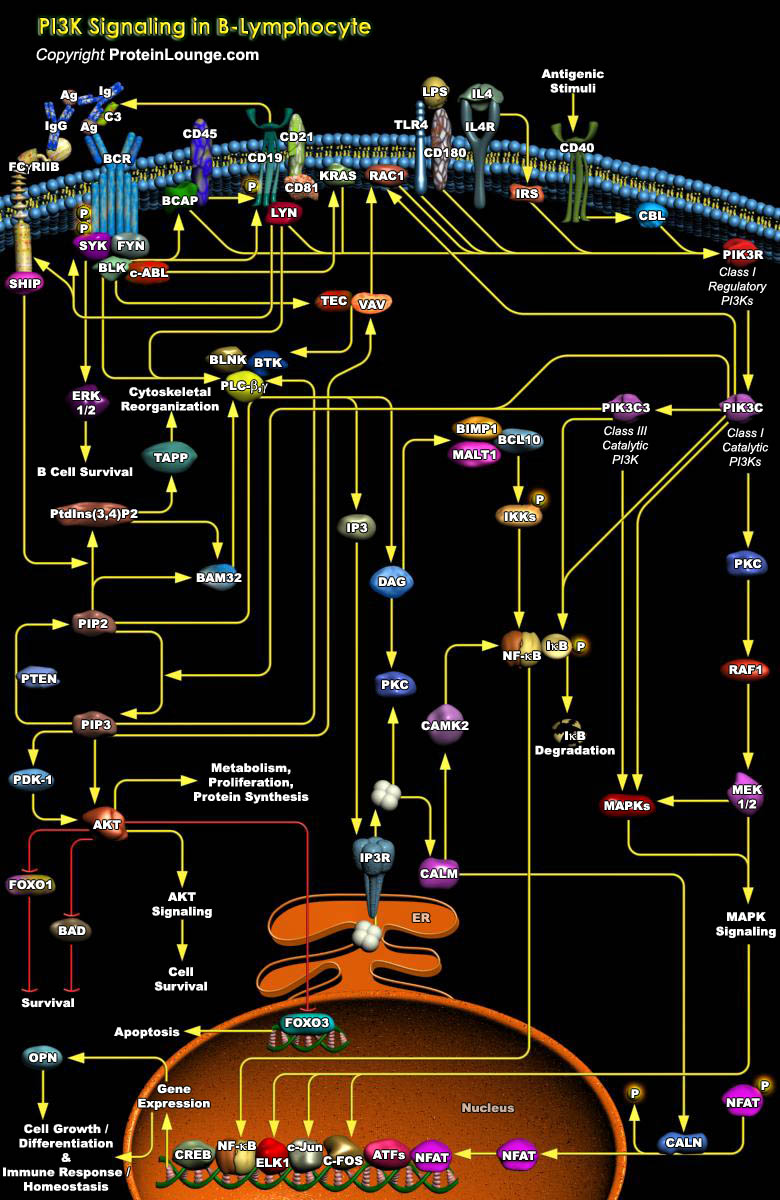
PI3Ks (Phosphoinositide-3-Kinases) regulate numerous biological processes, including cell growth, differentiation, survival, proliferation, migration and metabolism. In the immune system, impaired PI3K signaling leads to immunodeficiency, whereas unrestrained PI3K signaling contributes to autoimmunity and Leukemia. The Class I and III PI3Ks basically facilitate B-cell development through defined stages, resulting in at least three distinct lineages of mature B-lymphocytes. In B-cells, PI3K is activated within seconds of antigen-receptor triggering. The BCR (B-Cell antigen Receptor) plays a critical role in recognition of antigens and activation of B-cells. The BCR or mIg (Membrane Immunoglobulin) is associated with Ig-Alpha/CD79A (CD79A Antigen) and Ig-Beta/CD79B[..]

During immune response, T-cells are optimally activated in secondary lymphoid tissues in order to properly migrate into areas of inflamed tissue. Upon antigen recognition via the TCR (T-Cell Receptor)/CD3 (CD3 Antigen) complex, a second co-stimulatory signal from APCs or Antigen-Presenting Cells is necessary for activation of naive T-cells. According to the “Two-Signal Model” for T-cell activation, although the engagement of TCR/CD3 by antigen/MHC (Major Histocompatibility Complex) products is essential for the initial stages of T-cell activation, a second signal termed a co-stimulatory signal is required for clonal expansion and functional differentiation of antigen-specific T-cells. T-cell activation induces co-stimulatory molecules, including the ICOS (Inducible[..]

